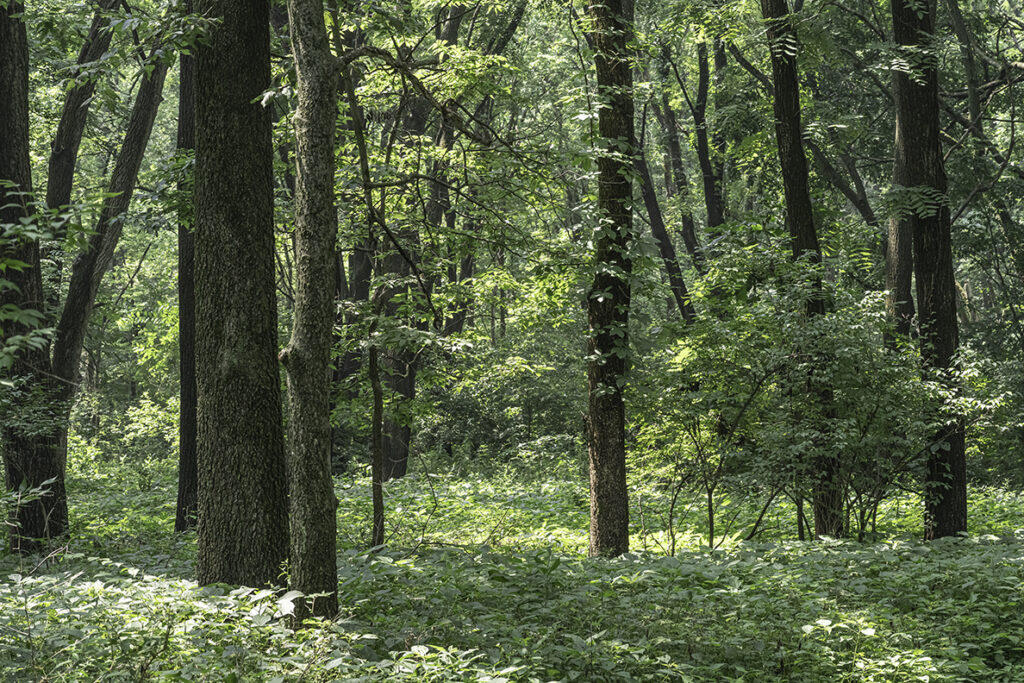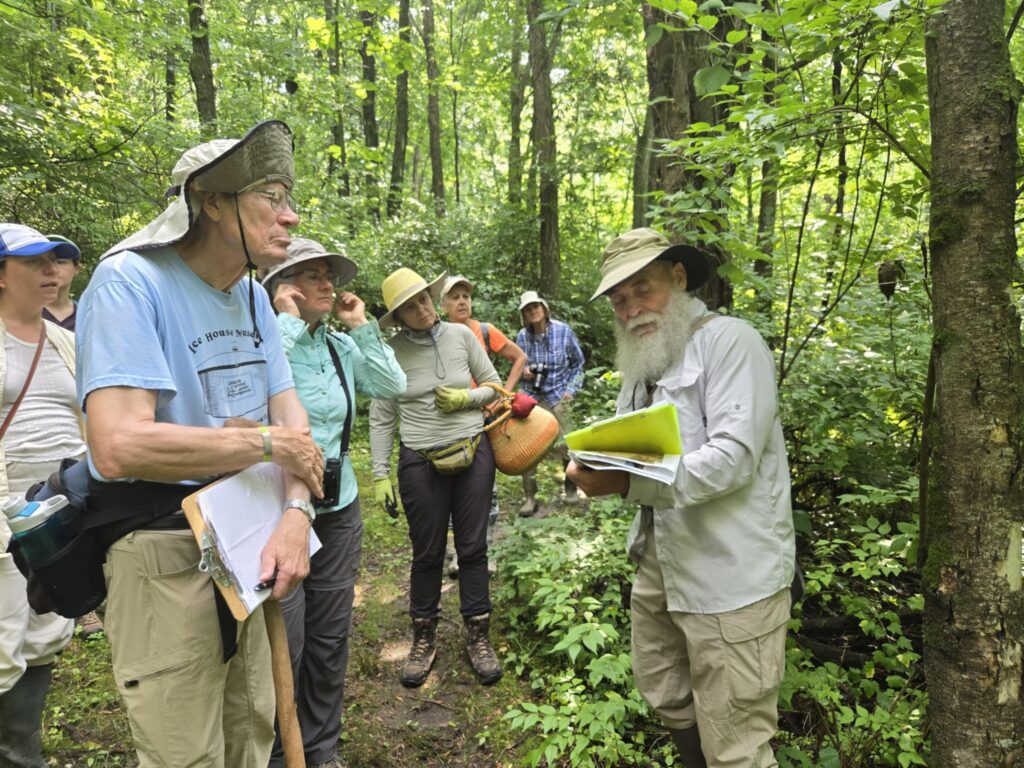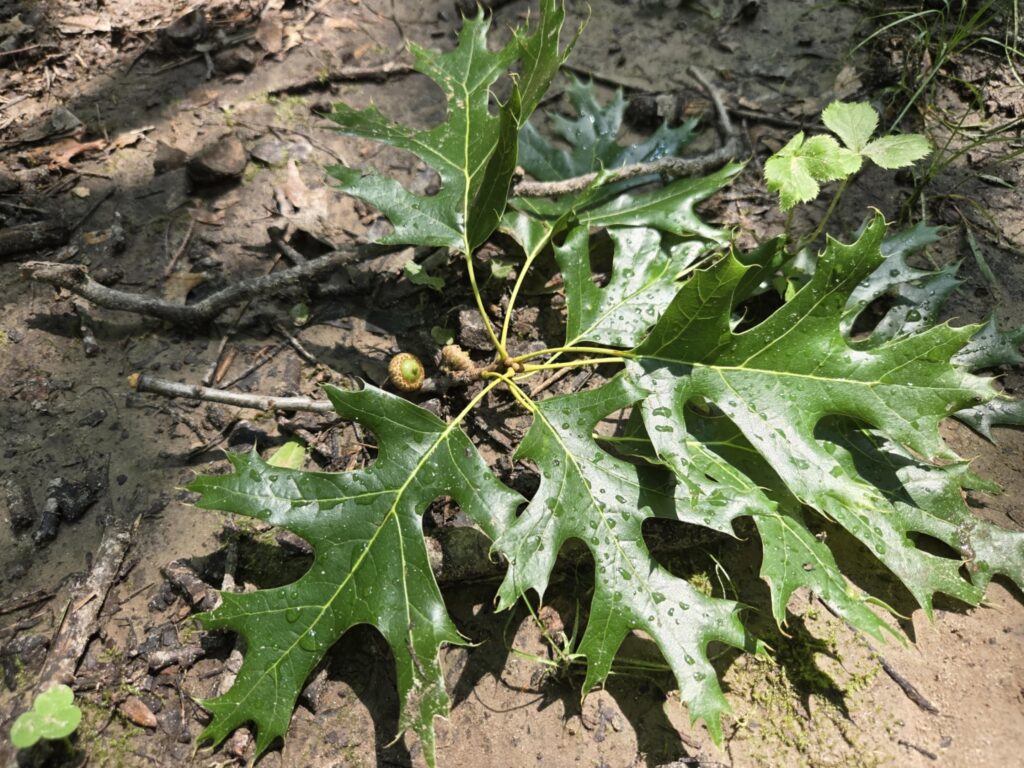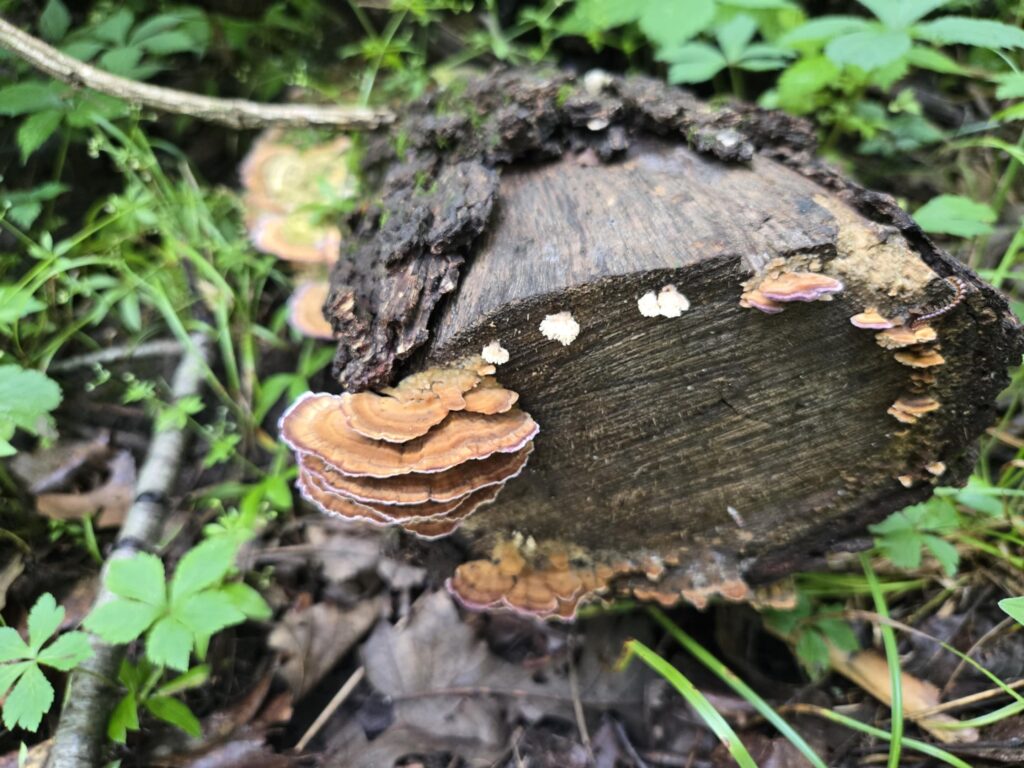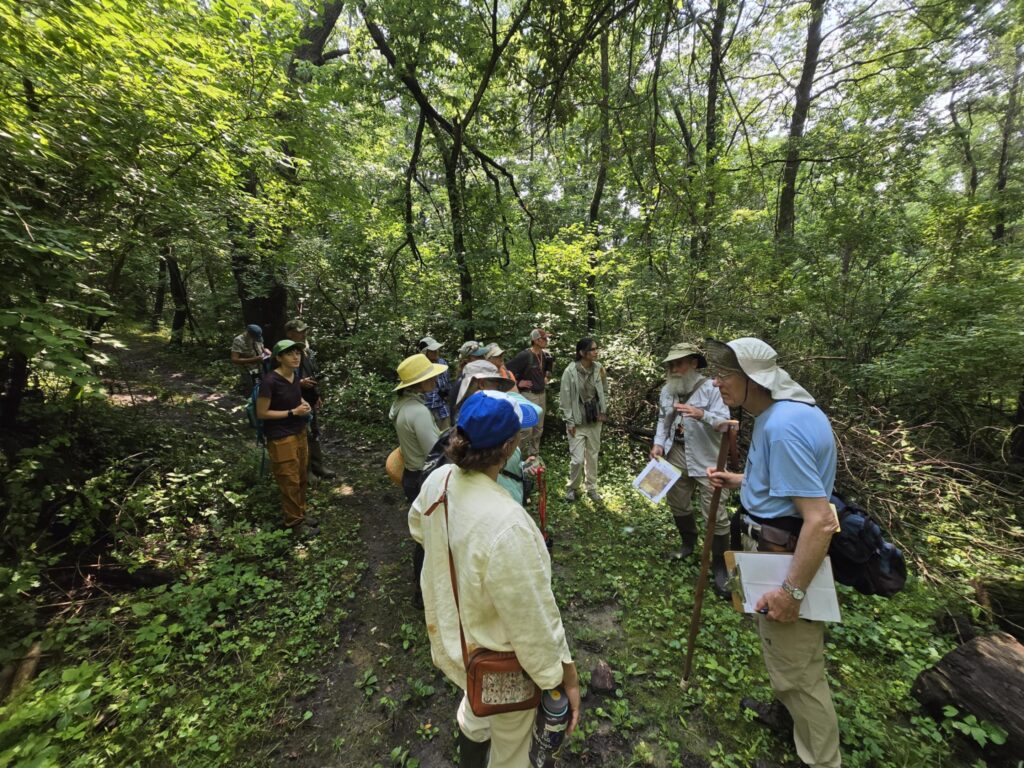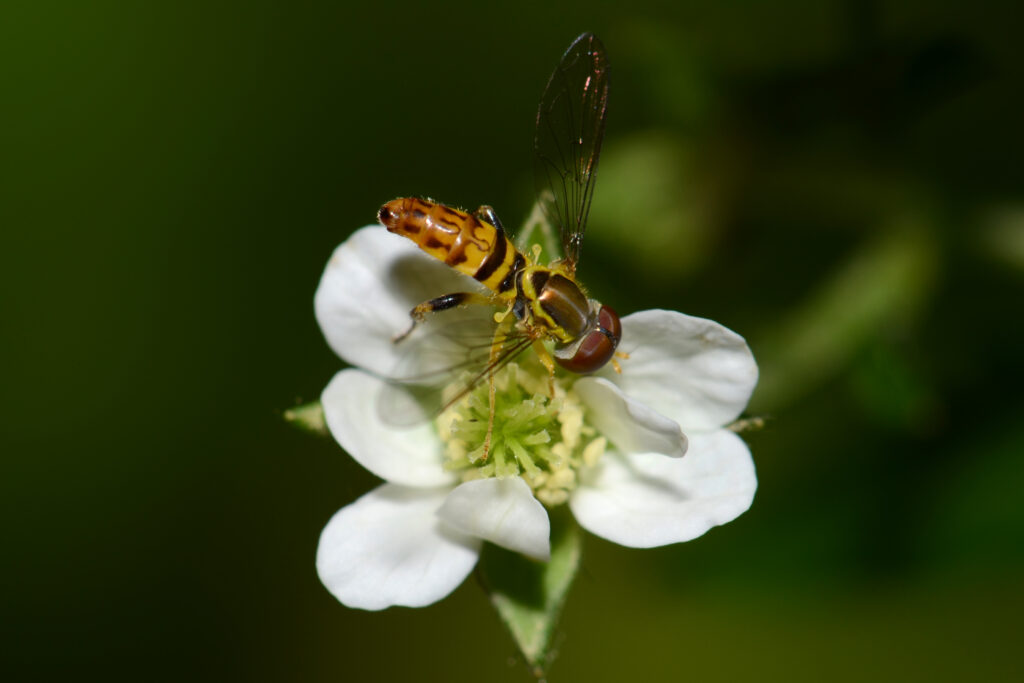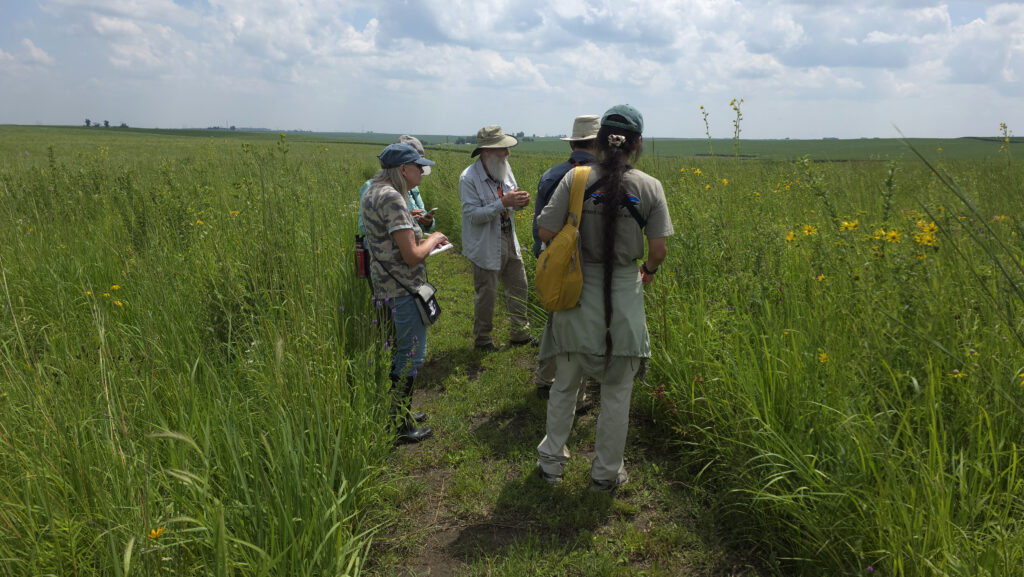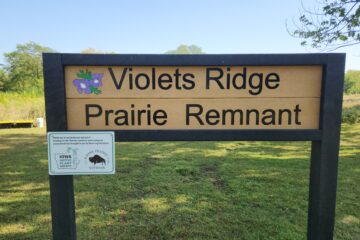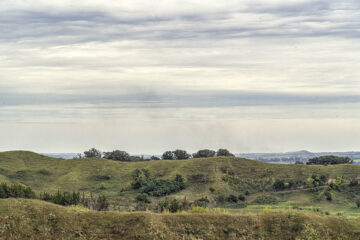What is a paha? Great question. A paha is significant due to its geological characteristics. The word “paha” is Dakota-Sioux for ridge or hill. Pahas can be found in the state within the Iowan Surface landform. The pahas predominantly occupy the southern portions of the Iowan Surface and are remnants of the Southern Iowa Drift Plain (pre Illinoian till) that once occupied most of Iowa prior to glaciation. Casey’s Paha State Preserve is a geological preserve and occupies 175 acres in Tama County. The entire paha is 2.5 miles long and 0.25 miles wide. It is a second growth forest that encompasses oak/hickory forest and woodland, savanna, and tallgrass prairie. The soils consist of well-drained loess and poorly-drained alluvium. The site has been documented historically by land surveyors and researchers as being an area of trees with prairie.
It was truly a treat to gather on July 12th to learn about pahas and the state preserve. Tom Rosburg began the day by giving attendees a crash course in the geology and ecology of pahas throughout Iowa. Curiosity was a driving motivation for participants to attend the field trip. A plant list from 2008 was provided and we set out to explore the land.
A bonus trip to Irvine Prairie was also offered the same day and many participants took the opportunity to explore even more natural areas nearby.
